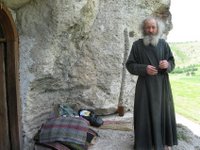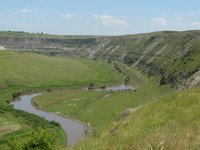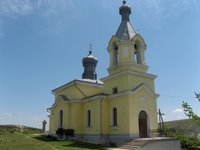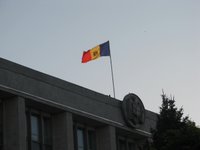At the cave monastery, I entered a flight of dark stairs heading down towards the glimmer of a distant lamp. At the bottom was the 'Pestere' monastery, a small cave which is still used by monks today. I was shown were in the old days the resident monks used to sleep, each having their own small alcove in an unlit cave behind the main church. Outside of the church door, which stepped out onto a ledge in the rocks, were great views of the valley and river flowing below, there were also windows built for the monastery in the cave wall. The monk there who spoke a little English as well as good French and Russian, was able to in a mix of languages tell me a little about the history and how the monks were kicked out when Russia occupied the country in the 19th century. But now since the break of the Soviet Union, Monastic life there resumed. He also showed me where I could find a steep stony path down the hill side (not one for anyone scared of heights or walking along steep drops) to where more caves could be found. Many of the original 120 caves were now impossible to enter since an earthquake caused them to collapse, but around 40 are still passable. I reached some but they were all being guarded by mean looking cows or goats and so i did not venture inside any.


Left: The kind, friendly old monk who wanted to tell me everything about the caves and his life.
Right: Views from the outside door of the cave monastery
There was also a picturesque church just along the top of the hill side, not surprisingly this had also been adopted as a shading place of a few cows in the incredibly hot and humid Moldovan climate.


Left: Another church built close by to the Pestere monsatery.
Right: Moldovan flag flies above the government palace in Chisinau



No comments:
Post a Comment